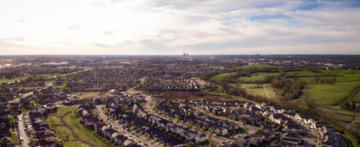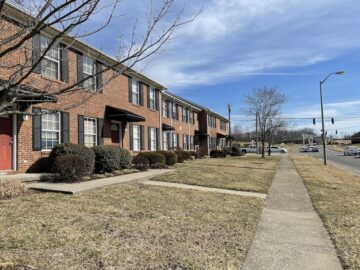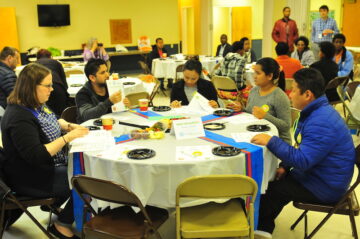Housing & Jobs in Lexington
Lexington’s Urban Service Boundary (USB) is a nuanced topic, complicated by many variables. The most discussed consideration is the implication of the USB on the housing market. Is the USB limiting growth in Lexington? Will expanding the boundary solve that problem? These are important questions, but they aren’t the only questions we need to consider. 
Expanding the USB also means expanding infrastructure—sewer services, fire departments, utility lines—which is a costly endeavor. Expansion also means new roads, longer commutes, and more air pollution. If we did expand the boundary, what types of dwellings would be built on that land? Would we build housing that is more affordable for more folks, or expensive single-family homes? And what about Lexington’s agricultural and tourism industries? How will expanding the USB affect our unique identity?
Smart growth requires objective, critical thinking. Fayette Alliance wants all stakeholders—residents, farmers, developers, real estate professionals, and business owners—to succeed and prosper. We all want the same thing: for Lexington to be a beautiful place where everyone can afford to live. Complicated problems rarely have simple solutions, so we’re committed to discourse that asks the tough questions. Here are some common claims about the USB and the nuanced truth about them.
Lexington’s Urban-Rural Balance
Lexington-Fayette County is a unique metro area. It relies heavily on farmland and agriculture and is a busy but beautiful mid-sized American city. Even though there’s more “rural” land outside the USB than “urban” land contained within, it’s important to remember that these terms are really just designations and don’t tell the whole story.
When most people hear the term “rural,” they imagine something more accurately described as “agriculture.” And much of the land outside the boundary, designated as “rural,” is used for agricultural production, which is significant to our local economy. Just how important is this industry? According to a 2017 study conducted at the University of Kentucky:
- 1 in 12 jobs in Lexington are directly connected to agriculture.
- The industry has a $2.3 billion annual economic impact.
- $1.3 billion in additional income, profits, and dividends annually.
- Over $8.5 million annually contributed through local payroll tax.
- Over $80 million of revenue via equine tourism.
Keep in mind that a lot of the “rural” land outside the USB is also used for purposes other than agriculture. Neighborhoods like Wellesley Heights and Westmoreland, for example, exist outside the USB. So do facilities like the Bluegrass Airport and the Bluegrass Station Industrial Park. Keeneland generates $51 million from out-of-county visitors for accommodations, restaurants, gasoline, and other retail establishments in Fayette County per year. Based on an annual average of 250,000 tourists, the Kentucky Horse Park generates $31.3 million for the same types of businesses.The USB most aptly demarcates how far city services will extend, but it doesn’t mean everything outside is just farmland, or that it doesn’t have a significant impact on our community.
The Lexington-Fayette County USB was implemented in 1958, and was the first city in the US to adopt a growth boundary. The strategy was to limit growth outward into our incredibly unique agricultural landscape and focus instead on upward growth. Doing so not only protected our geographic identity, it allowed city officials to develop progressive, sustainable services for residents—sanitation, sewer services, firefighters, and police. Because of this revolutionary new approach to city management, Lexington has emerged in the 21st century as a model for the American city.
A few of our accolades include:
- “The 50 Best Places to Travel in 2021” – Travel + Leisure
- #14 Most Livable Cities in the U.S. in 2020 – Smart Asset
- “Top 14 Walkable Cities in the U.S.” – Trips To Discover
- #9 Friendliest City in the U.S. 2020 – Condé Nast Traveler
- #3 Cities with the Best Work-Life Balance 2020 – Smart Asset
- One of the 50 Best Foodie Towns in the U.S. 2019 – The Daily Meal
- Top 50 Places of a Lifetime/America – National Geographic Traveler
Since our implementation in 1958, many American cities have adopted growth boundaries, and some states—Oregon, Washington, and Tennessee—have passed legislation requiring all municipalities to adopt boundaries to manage growth and properly budget infrastructure spending.
But can’t that “rural” land help with the housing shortage or provide more land for jobs?
Studies have repeatedly proven that the effects of urban sprawl neither alleviate the strain on affordable housing nor increase the quality of life for residents.
A 2017 study funded by the Lexington-Bluegrass Association of Realtors, conducted at the University of Kentucky, concluded that our land use policies are not causing home prices to rise more quickly than the national average (they’re actually rising more slowly). The study also concluded that expanding the USB would only have a temporary impact on the price of housing, if any (most likely limited to 1 year).
Furthermore, multiple studies have shown that we have more than 17,000 acres of vacant, underused, and underutilized land within the USB with the opportunity for development and redevelopment, both for housing and for jobs. This includes 250 acres of land at Coldstream Park that Lexington acquired from the University of Kentucky specifically for economic development. Mayor Linda Gorton has recommended that city allocated funds be used for the infrastructure development to make that land shovel ready for new jobs as soon as possible. 
We don’t need to theorize about the effect of expanding the boundary on the housing market.
Something We Can All Agree On
Proponents of expansion have called residents to action so their voices might be heard. Fayette Alliance couldn’t agree more. In fact, FA has been facilitating community conversations since our inception, all the way back to 2006. Alongside organizations like the Bluegrass Community Foundation, Civic Lex, and others, FA helped to gather input from over 10,000 community members to inform the 2018 Comprehensive Plan. During that process, community voices were heard, and their message was clear: we want Lexington to be a unique, inclusive, and prosperous city of the 21st century, and the path forward is smart, sustainable growth. Through educational endeavors like our Grow Smart Academy and Grow Smart Academy 2.0 programs, FA will continue leading the conversation about how to shape a Lexington that accommodates everyone, especially the hard-working residents most concerned about issues like affordable housing, job opportunities, and a healthy environment.
members to inform the 2018 Comprehensive Plan. During that process, community voices were heard, and their message was clear: we want Lexington to be a unique, inclusive, and prosperous city of the 21st century, and the path forward is smart, sustainable growth. Through educational endeavors like our Grow Smart Academy and Grow Smart Academy 2.0 programs, FA will continue leading the conversation about how to shape a Lexington that accommodates everyone, especially the hard-working residents most concerned about issues like affordable housing, job opportunities, and a healthy environment.
This year, Civic Lex and a 30+ member advisory committee helped facilitate On The Table 2022, which was an entire week of community discussions April 10th-16th in preparation for the 2023 Comprehensive Plan update. While On The Table is over, you still have lots of opportunities to make your voice heard on the way Lexington should grow into the future. Check out different ways to get involved this year as the 2023 Comprehensive Plan update work continues; our bright future depends on it!

